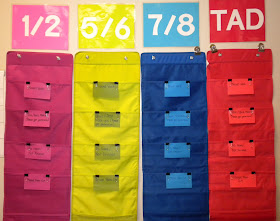I'm challenging myself this year to find a really rich question to ask near the beginning of every unit with the intention of answering it throughout the unit. Today, I started my measurement unit with my students. Our state standards require students to find the area of composite figures composed of polygons and circles and to find the volume of cylinders. I posed the following question to my students: "How much would it cost to paint the ceiling throughout the school?" Our school is highly irregular in design thanks to its age and at least three renovations/additions of which I'm aware. The map is far from rectangular; my room is a trapezoid and our cafeteria has a wall that bows out in an arc.
I set the students to work in a Think, Pair, Share in which they had to list factors we would have to consider when evaluating the cost. I meant to take photos of their posters. They'll get added to this post when I get back to my classroom. Here are a few of the "obvious" answers and some highlights that show they were really thinking about this in depth:
- The area of each ceiling tile and number of ceiling tiles
- The amount of paint per can, its cost, and how much surface it would cover
- The amount of masking tape, plastic sheeting, brushes, rollers, stir sticks, paint trays, ladders, and gloves needed. (I get the feeling these kids have painted before!)
- The salary of the crew, how long it would take to paint, and when the painting would happen
- How the lights would be treated, if at all. (This was a point of great contention. Some students thought it was a fabulous idea to paint the lights and give everything a blue cast. Others thought they would like regular white light in the classroom.)
- What kind of paint would be necessary. (They realized that the gym has a different type of ceiling than the classrooms and that they would need to research the proper materials.)
- The need to consider HVAC and proper ventilation. (They pointed out that we would waste A/C if we left the windows open to let the fumes escape.)
My next plan is to have them consider the list they made and decide what math skills they know that will help them with each aspect. I see applications of area, perimeter, volume, proportional reasoning, and likely percents (when items are on sale or using the percent of ceiling covered in lights in my room to predict the amount covered in the whole school). Just my luck, all of these are within my curriculum. :)
Students will then work on determining the area to be covered. I know we can do this with the maps of the school that we have, but I think I might be able to use my classroom GPS units at some point to get measurements on the outside corners of the building to help the students calculate the total area of the ceiling of the school. I honestly don't know much about how the GPS units work and need to learn what to do with them. That's a goal I have for this year. I did buy a book of lesson plan ideas so I could try to incorporate them this year.
Next, I will divide the class into teams, each of which is to research one area of interest (paint type, salary for workers, other materials, color selection) and provide two or three options for the proposal along with their recommendations for which one is the best choice.
At that point, we can put together a PowerPoint as a class and (I hope) "brief" our principal on the idea in our teams.
I really doubt we'll be painting anything, but it's food for thought!















